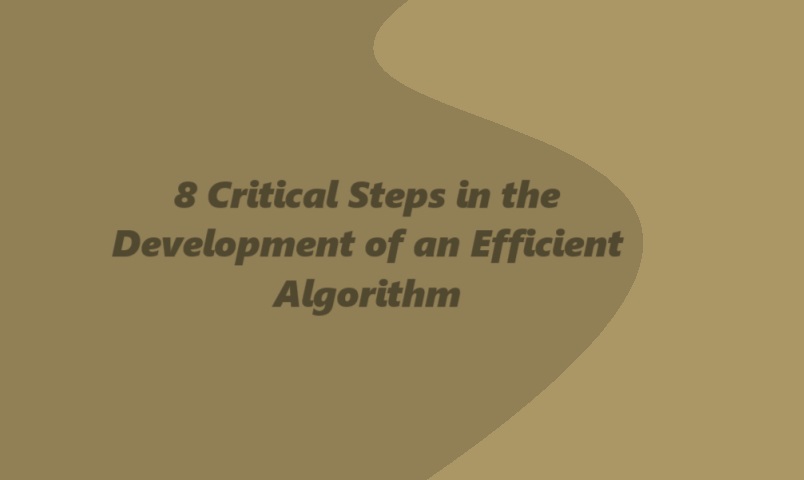Introduction
Developing an efficient algorithm is a crucial aspect of problem-solving in computer science and programming. This article discusses eight critical steps that can help you develop an efficient algorithm, including defining the problem, developing a model, specifying the algorithm, designing and implementing the algorithm, testing it thoroughly, analyzing its performance, and optimizing and refining it as needed. By following these steps, you can enhance the efficiency and effectiveness of your algorithm development process and become a proficient algorithm developer.
An algorithm is a step-by-step procedure designed to solve a specific problem. Whether you are a beginner or an experienced programmer, following a systematic approach can greatly enhance the efficiency and effectiveness of your algorithm development process. In this article, we will discuss eight critical steps that can help you develop an efficient algorithm.
1. Definition of the Problem
The first step in developing an efficient algorithm is to clearly define the problem you are trying to solve. This involves understanding the problem statement, its constraints, and the desired outcome. By having a clear understanding of the problem, you can proceed to the next step with a well-defined goal in mind.
2. Development of a Model
Once you have defined the problem, the next step is to develop a model that represents the problem in a structured manner. This model can be in the form of a flowchart, a diagram, or any other visual representation that helps you visualize the problem and its components. Developing a model allows you to analyze the problem more effectively and identify potential solutions.
3. Specification of the Algorithm
In this step, you need to specify the algorithm that will solve the problem. This involves breaking down the problem into smaller sub-problems and identifying the steps required to solve each sub-problem. It is important to consider the efficiency and complexity of the algorithm at this stage to ensure that it can handle large inputs and provide timely results.
4. Designing an Algorithm
Once the algorithm has been specified, the next step is to design the algorithm in a programming language of your choice. This involves selecting the appropriate data structures and algorithms to implement the steps identified in the previous step. The design phase is crucial as it lays the foundation for the implementation and determines the overall efficiency of the algorithm.
5. Implementation of the Algorithm
After designing the algorithm, it is time to implement it in a programming language. This involves writing the code that will execute the steps defined in the algorithm. It is important to ensure that the code is clean, well-organized, and follows best practices to improve readability and maintainability. Additionally, testing the algorithm during the implementation phase can help identify any errors or bugs that need to be addressed.
6. Program Testing
Testing is a critical step in algorithm development as it ensures that the algorithm functions as intended and produces the correct results. During the testing phase, you should run the algorithm with various inputs, including edge cases and corner cases, to validate its accuracy and efficiency. Testing also helps identify any potential issues or areas for optimization.
7. Performance Analysis
Once the algorithm has been successfully implemented and tested, it is important to analyze its performance. This involves measuring the algorithm’s execution time and memory usage for different input sizes. Performance analysis helps identify any bottlenecks or areas where the algorithm can be optimized to improve efficiency.
8. Optimization and Refinement
Based on the performance analysis, you can identify areas for optimization and refinement. This may involve revisiting the algorithm design, modifying data structures, or implementing more efficient algorithms for specific steps. The goal is to continuously improve the algorithm’s efficiency and effectiveness.
Conclusion
Developing an efficient algorithm requires a systematic approach and careful consideration of each step in the development process. By following the eight critical steps discussed in this article, you can enhance the efficiency and effectiveness of your algorithm development process. Remember to define the problem, develop a model, specify the algorithm, design and implement the algorithm, test it thoroughly, analyze its performance, and optimize and refine it as needed. With practice and experience, you can become a proficient algorithm developer and solve complex problems more effectively.

